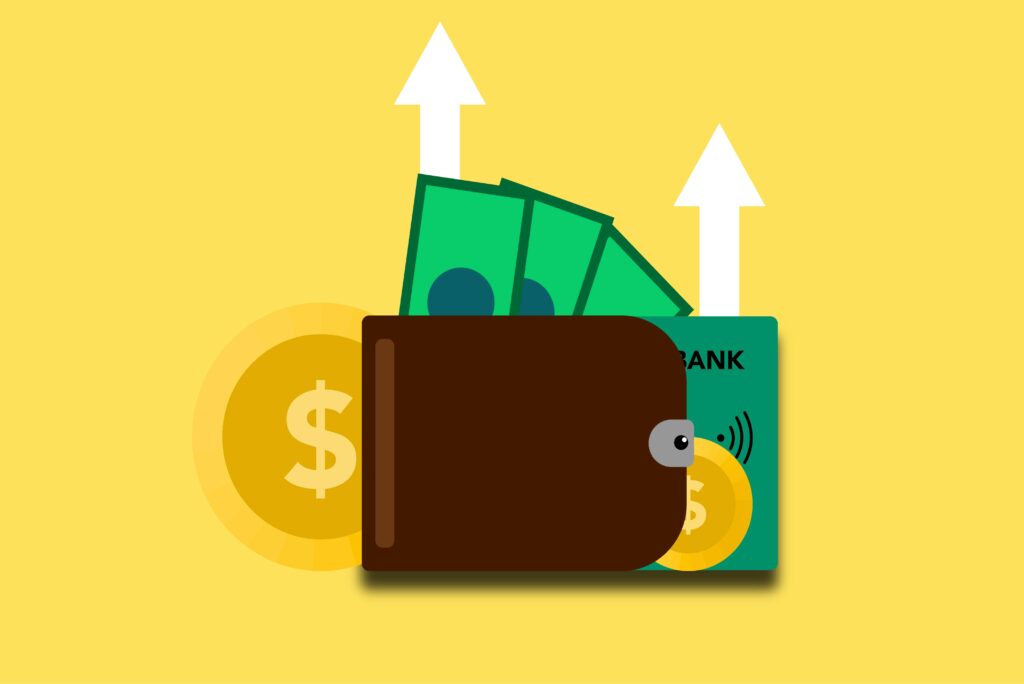Learning how to manage money better is one of the most valuable skills you can develop regardless of your income or stage in life. This is not about becoming a financial expert overnight, but about making smarter, more intentional choices that lead to long-term stability and peace of mind.
Managing your money doesn’t have to feel complicated or overwhelming, with the right strategies you can take control of your financial future, avoid common money traps, and build habits that support your goals.
In this article, we’ll explore simple, practical steps you can start today to budget wisely, save consistently and invest with confidence.
Key Takeaways
- Start by creating a budget that outlines your income and expenses to see where your money goes.
- Build an emergency fund with at least three to six months of living expenses for unexpected costs.
- Focus on paying down high-interest debt first to reduce financial strain.
- Set clear financial goals for both the short and long term to guide your spending and saving decisions.
- Regularly review and adjust your financial plan to stay on track with your goals.
Creating A Budget That Works
Understanding Your Income
Okay, so first things first, you gotta know what’s coming in. This isn’t just your paycheck; it’s everything after taxes, side hustles? Include ’em. Investment income? Yep, that too. Basically, anything that lands in your account regularly.
Knowing your true income is the foundation, it’s like trying to bake a cake without knowing how much flour you have, you’re setting yourself up for a mess make sure you’re tracking all sources of income accurately.
Tracking Your Expenses

Alright, now for the not-so-fun part: figuring out where your money vanishes each month. I know, it can be a bit scary, but trust me, it’s super important. You can use apps, spreadsheets, or even just a notebook.
The goal is to see exactly where your cash is going. Are you spending way too much on takeout? Maybe those little subscriptions are adding up faster than you thought? This step is all about awareness.
Here’s a simple way to categorize your spending:
- Housing (rent/mortgage)
- Transportation (car payments, gas, public transit)
- Food (groceries, dining out)
- Utilities (electricity, water, internet)
- Entertainment (movies, concerts, hobbies)
Tracking expenses is not about restriction; it’s about awareness and understanding your spending habits so you can make informed decisions about your money. This is like shining a light in a dark room – suddenly, you can see everything clearly.
Setting Realistic Spending Limits
Now that you know where your money is going, it’s time to set some boundaries. This is where the magic happens. Look at your expenses and ask yourself: “Can I cut back here?” Be honest with yourself. Maybe you don’t need that fancy coffee every morning or perhaps you can find a cheaper internet plan.
The key is to set limits that you can actually stick to, don’t try to cut everything out at once or you’ll burn out fast. Start small, and gradually adjust as you go, consider using a budgeting system like the 50/30/20 rule to help guide your spending. Remember, it’s about finding a balance that works for you and your lifestyle.
Building A Strong Emergency Fund
Life throws curveballs, right? That’s why having an emergency fund is super important.
This is basically a safety net for when unexpected stuff happens, like a sudden car repair or a medical bill. You don’t want to be caught off guard and have to rack up credit card debt. Let’s get into how to build one.
Determining Your Savings Goal
Okay, so how much should you actually save? A good rule of thumb is to aim for three to six months’ worth of living expenses. I know, that sounds like a lot! But think about it: if you lost your job, how long would it take you to find a new one? Having that cushion can really ease your stress.
Start by figuring out your monthly expenses – rent, utilities, groceries, the whole shebang then multiply that number by three or six. That’s your target! If that seems overwhelming, start small. Even $1,000 is a great start. You can use a savings account to keep your money safe.
Choosing The Right Savings Account
Not all savings accounts are created equal, you want one that’s easily accessible but also earns you some interest. Look for high-yield savings accounts or even money market accounts, compare interest rates and fees, some accounts might have minimum balance requirements, so watch out for those.
The goal is to find an account that helps your money grow without making it too difficult to get to when you need it. Make sure the account is FDIC insured, so your money is protected.
Strategies For Regular Contributions
Alright, so you’ve got your goal and your account, now how do you actually save the money?
The key is consistency, treat your emergency fund like a bill you have to pay each month and set up automatic transfers from your checking account to your savings account, even small amounts add up over time.
Here are some ideas:
- Automate it: Set up a recurring transfer every payday.
- Round-Up Rule: Round up every purchase to the nearest dollar and transfer the difference to your savings.
- Side Hustle: Put any extra money you make from a side gig directly into your emergency fund.
Building an emergency fund isn’t about getting rich quick, it’s about having peace of mind and knowing that you can handle whatever life throws your way without derailing your entire financial future. It takes time and effort, but it’s so worth it in the long run. Start today, even if it’s just a few dollars, you’ll thank yourself later.
Managing Debt Effectively

Debt can feel like a huge weight, but it doesn’t have to control your life, getting a handle on your debt is a critical step toward financial freedom. This is about making smart choices and creating a plan to get you out of the red.
Identifying High-Interest Debt
First things first, you need to know exactly what you owe, make a list of all your debts: credit cards, student loans, car loans, everything. Write down the balance, the interest rate, and the minimum payment for each.
The goal here is to spot those debts that are costing you the most in interest, these are the ones you want to tackle first. For example:
- Credit Cards: Often have the highest interest rates.
- Payday Loans: Extremely high interest, avoid if possible.
- Personal Loans: Interest rates vary, check the terms.
Creating A Debt Repayment Plan
Okay, you know what you owe. Now, let’s make a plan to pay it off. There are a couple of popular methods:
- Debt Avalanche: Focus on paying off the debt with the highest interest rate first, while making minimum payments on everything else. This saves you money in the long run.
- Debt Snowball: Pay off the smallest debt first, regardless of interest rate. This gives you quick wins and keeps you motivated.
- Consider automating your payments to avoid late fees and stay on track.
Choose the method that works best for you and stick with it. Consistency is key here, even small regular payments can make a big difference over time.
Exploring Consolidation Options
Debt consolidation is basically rolling multiple debts into one, ideally with a lower interest rate. This can simplify your payments and potentially save you money, some options include:
- Balance Transfer Credit Cards: Transfer high-interest credit card balances to a card with a lower rate (but watch out for transfer fees!).
- Personal Loans: Use a personal loan to pay off other debts. Make sure the interest rate is lower than what you’re currently paying.
- Home Equity Loans: Using your home equity can be risky, as you’re putting your home on the line. Only consider this if you’re confident you can make the payments.
Setting Financial Goals For The Future
Short-Term vs Long-Term Goals
So you’re trying to get your money in order, right? A big part of that is figuring out what you actually want to do with your money.
That’s where financial goals come in, think of it like this: short-term goals are the things you want to achieve in the next year or so, like paying off a credit card or saving for a vacation. Long-term goals are bigger, like buying a house, planning for retirement, or funding your kids’ college education.
Prioritizing Your Financial Ambitions
Once you have a list of goals, you need to figure out which ones are most important, you can’t do everything at once, so you have to prioritize.
Maybe paying off high-interest debt is more important than taking that fancy vacation this year or maybe you really want to buy a house in the next few years, so that becomes your top priority. It’s all about figuring out what matters most to you.
Here’s a simple way to think about it:
- Needs: These are essential expenses like housing, food, and transportation.
- Wants: These are things you’d like to have but aren’t essential, like entertainment or dining out.
- Savings/Investments: This is money you set aside for future goals.
Allocating your resources wisely among these categories is key to achieving your financial ambitions. It’s about making conscious choices about where your money goes.
Creating A Roadmap To Achieve Goals
Great! You know what you want, and you know what’s most important. Now, how do you actually get there?
You need a plan!
Break down those big goals into smaller, manageable steps, for example: if you want to save $5,000 for a down payment in a year, you need to save about $417 each month. Automate your savings so you don’t even have to think about it and don’t forget to track your progress and celebrate those small wins along the way.
This journey is all about staying motivated and keeping your eye on the prize, always remember to maintain discipline, patience, and consistent effort even when confronting challenges.
Investing For Long-Term Growth
Okay, so you’ve got a handle on budgeting, saving, and maybe even tackled some debt. Now it’s time to think about the future, and that means investing.
I know, it can seem scary, but it’s really just about making your money work for you. The goal is to grow your wealth over time, so you can reach those big financial milestones.
Understanding Different Investment Options
There are a ton of ways to invest, and it can be overwhelming. Let’s break down a few common ones:
- Stocks: You’re buying a piece of a company. Potential for high growth, but also higher risk.
- Bonds: You’re basically lending money to a company or the government. Lower risk than stocks, but also lower potential returns, think of it as a safer and steadier option.
- Mutual Funds: A basket of stocks, bonds, or other assets managed by a professional, diversification is built-in which helps lower risk. It’s like a pre-made investment mix.
- ETFs (Exchange-Traded Funds): Similar to mutual funds, but they trade like stocks and often have lower fees than mutual funds. This is another way to diversify easily.
- Real Estate: Buying property with the hope it increases in value can be a good long-term investment, but it’s not very liquid (hard to sell quickly).
Investing isn’t gambling, it’s about making informed decisions based on research and understanding your own risk tolerance. Don’t just throw money at something because someone on the internet told you to.
Assessing Your Risk Tolerance
Before you jump into any investment, you need to figure out how much risk you’re comfortable with.
Are you okay with the possibility of losing money in the short term for the chance of bigger gains later? Or do you prefer a more conservative approach, even if it means slower growth?
There are many investment strategies to consider. Here’s a simple way to think about it:
| Risk Tolerance | Investment Style | Potential Returns | Potential Losses | Sleep at Night Factor |
|---|---|---|---|---|
| Low | Mostly bonds, some dividend stocks | Lower | Lower | High |
| Moderate | Mix of stocks and bonds | Moderate | Moderate | Medium |
| High | Mostly stocks, some alternative investments | Higher | Higher | Low |
Building A Diversified Portfolio
Don’t put all your eggs in one basket! Diversification is key to managing risk, spread your money across different types of investments, industries, and geographic regions. This way, if one investment does poorly, it won’t sink your entire portfolio.
Here are some steps to build a diversified portfolio:
- Determine your asset allocation: Decide what percentage of your portfolio should be in stocks, bonds, and other asset classes based on your risk tolerance and time horizon.
- Choose your investments: Select specific mutual funds, ETFs, or individual stocks and bonds that fit your asset allocation.
- Rebalance regularly: Periodically review your portfolio and adjust your holdings to maintain your desired asset allocation. This might mean selling some investments that have done well and buying more of those that haven’t.
Investing for the long term is a marathon, not a sprint, be patient, stay informed and don’t panic sell during market downturns. Consider using tax-advantaged accounts like a 401(k) or IRA to help your money grow even faster. Remember, even small consistent investments can add up to big things over time.
Reviewing And Adjusting Your Financial Plan

It’s easy to think that once you’ve set up a financial plan you’re done, but life happens! Jobs change, the economy shifts, and your personal goals evolve.
That’s why regularly checking in on your financial plan is super important, think of it like a GPS – you need to make sure you’re still on the right route.
Regularly Monitoring Your Progress
The first step is to actually look at your numbers. Are you sticking to your budget? Is your emergency fund growing? Are your investments performing as expected?
Don’t just glance at things, really dig in. I like to set aside an hour each month to review everything, it might seem like a chore, but it’s worth it for the peace of mind. Here’s a simple table you can use to track your progress:
| Category | Target Amount | Actual Amount | Difference |
|---|---|---|---|
| Emergency Fund | $10,000 | $8,000 | -$2,000 |
| Debt Repayment | $500/month | $500/month | $0 |
| Investment Growth | 8% | 6% | -2% |
Making Necessary Adjustments
Okay, so you’ve reviewed your plan and found some areas that need work, now what? Don’t panic!
This is where you make adjustments, maybe you need to cut back on spending, find a higher-yield savings account or rebalance your investment portfolio, be honest with yourself about what’s working and what’s not. It’s okay to tweak things as needed, for example:
- If you’re not saving enough, look for ways to reduce expenses.
- If your investments are underperforming, consider talking to a financial advisor.
- If your income has increased, think about increasing your savings or investments.
Staying Informed About Financial Trends
The financial world is constantly changing, new laws, new investment opportunities and new economic conditions can all impact your financial plan.
That’s why it’s important to stay informed, read financial news, follow reputable financial blogs and consider consulting with a financial professional. The more you know, the better equipped you’ll be to make smart financial decisions.
Here are some ways to stay in the loop:
- Subscribe to financial newsletters.
- Follow financial experts on social media.
- Attend financial webinars or workshops.
Wrapping It Up
Getting a handle on your finances is a journey, not a sprint, it takes time and effort, but the payoff is huge. By sticking to a budget, saving for those rainy days, and keeping your debt in check, you’re setting yourself up for a better future.
Don’t forget to set some goals and think about investing for the long haul and make sure to check in on your plan regularly to see how you’re doing, with these steps you’ll be on the right track to mastering your money and enjoying peace of mind.
Frequently Asked Questions
What is the first step to managing my money better?
The first step is to create a budget. This helps you see how much money you have coming in and going out each month.
How much should I save for an emergency fund?
Aim to save enough to cover three to six months of living expenses in case of unexpected costs.
What should I do if I have debt?
Focus on paying off high-interest debts first, like credit cards, and create a plan to manage your payments.
How can I set financial goals?
Think about what you want to achieve in the short and long term, like saving for a car or retirement, and prioritize them.
What types of investments should I consider?
Look into options like stocks, bonds or mutual funds and choose based on how much risk you’re comfortable with.
How often should I review my financial plan?
It’s good to check your financial plan regularly, at least a few times a year, to see if you need to make changes.




